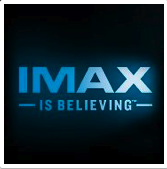- The idea for IMAX came about in 1967, at EXPO ’67, when a group of Canadian entrepreneurs and filmmakers felt that a single, powerful projection system was the way to go.
- IMAX debuted at EXPO ’70, in Osaka. The first permanent installation of an IMAX theatre took place at Toronto’s Ontario Place in 1971.
- At the time of writing, there were over 580 theatre installations of IMAX in 48 countries.
- IMAX technology won an Oscar in 1997 for Scientific and Technical Achievement.
- When released in 2004, The Polar Express became the highest-grossing digitally re-mastered IMAX film.
- A proposed joint venture for a 3D television network—IMAX, Sony, and Discovery Communication—will bring a 24/7 featured content from several genres, including natural history, space exploration, adventure, and much more. There will also be children’s programming (courtesy of Discovery).
- In 2001, as a subsidiary company, IMAX formed 3D Entertainment Distribution, Inc. Many upcoming titles will be in “only in IMAX 3D theatres”, such as the 2013 title Kenya 3D: Animal Kingdom.
- When Avatar 3D came out, it refueled the controversy about the pros and cons of viewing 3D. IMAX screens, after all, are almost seven stories high (with sound that would take your head off). Despite some people who report ‘ghosting’ and ‘stuttering’ while using the tinted 3D glasses, audiences continue to flock to IMAX 3D movies. Another test case in point, due to be released in 2012, will be the upcoming Ridley Scott blockbuster Prometheus.
